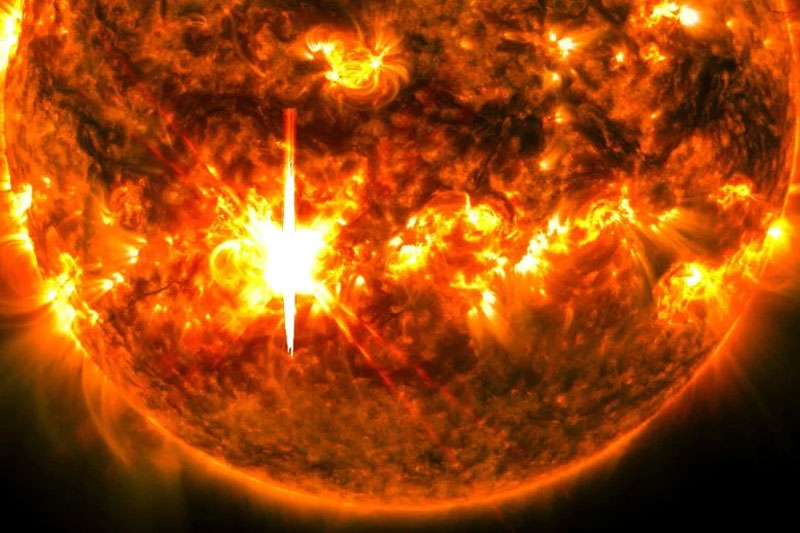Next Friday, extensive auroras will be visible on Earth even to southern latitudes. The Earth will be covered by a cloud of solar plasma thrown towards our planet late at night on October 2. The ejection was accompanied by one of the most powerful flares in the current cycle of solar activity – with an index of X7.1. A more powerful flare occurred on May 14, but it was not accompanied by a plasma ejection. The new event promises to lead to a colorful celestial show.

Image source: NASA/SDO
The current 11-year cycle of solar activity – the 25th in a row – promises to surprise with many extraordinary events on the star. It is not without reason that a fleet of several solar observatories is sent to the Sun. Our world has never peered so intently at its star as in the new cycle near the peak of its activity. Moreover, the peak may begin in the coming months, whereas previously it was predicted for the first half of 2025. A number of scientific papers published earlier this year are downright troubling. Scientists fear that the Sun may unpleasantly surprise us.
The peak of the outbreak of record intensity X7.1 occurred on October 2 at 01:20 Moscow time. This is an extreme class flare on a scale of 10, although class X has no upper limit. On July 23, 2024, an absolutely powerful flare of X14 level occurred on the Sun, but it was on the far side of the Sun and moved away from the Earth. Therefore, the “delights” of that event remained inaccessible to the earthly observer. Now, an X-ray flare covered the side of the planet facing the star and for a short time even disabled short-wave communications in parts of the Western Hemisphere, the Pacific Ocean, Australia and the Asia-Pacific region.
But the main show is expected on Friday, October 4, when a coronal solar mass ejection reaches the Earth. In addition to colorful auroras, there remains the possibility of failures of power distribution systems. Since this is not the first such case, the energy sector is, in principle, ready to face such phenomena. Another thing is that we have not yet encountered truly powerful flares on the Sun, and they, as scientists have found out, are a fairly common occurrence in the history of the Earth.